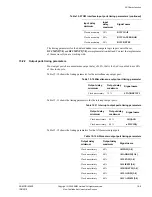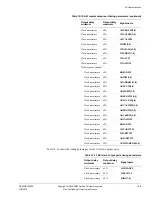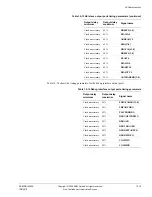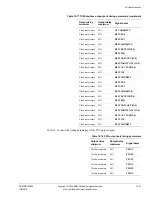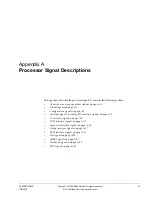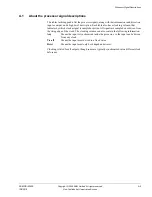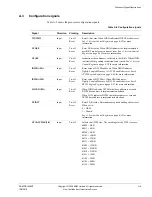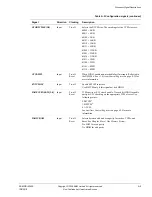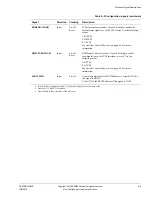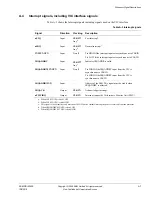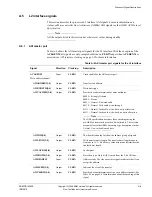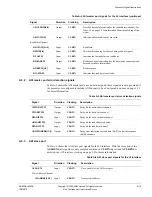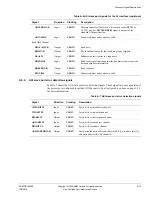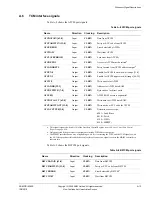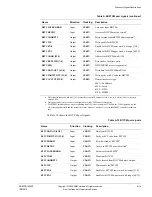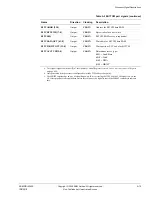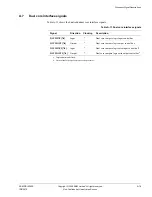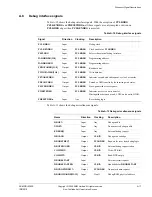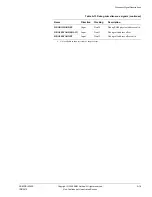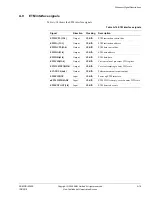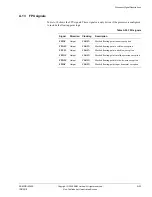
Processor Signal Descriptions
ARM DDI 0363E
Copyright © 2009 ARM Limited. All rights reserved.
A-9
ID013010
Non-Confidential, Unrestricted Access
AWVALIDM
Output
CLKIN
Indicates address and control are valid.
Write data channel
WDATAM[63:0]
Output
CLKIN
Write data.
WIDM[3:0]
Output
CLKIN
The identification tag for the write data group of signals.
WLASTM
Output
CLKIN
Indicates the last data transfer of a burst.
WREADYM
Input
CLKIN
Indicates that the slave is ready to accept write data
WSTRBM[7:0]
Output
CLKIN
Write strobes used to indicate which byte lanes must be updated.
WVALIDM
Output
CLKIN
Indicates address and control are valid.
Write response channel
BIDM [3:0]
Input
CLKIN
The identification tag for the write response signal.
BREADYM
Output
CLKIN
Indicates that the core is ready to accept write response.
BRESPM[1:0]
Input
CLKIN
Write response.
BVALIDM
Input
CLKIN
Indicates that a valid write response is available.
Read address channel
ARADDRM[31:0]
Output
CLKIN
Instruction fetch burst start address.
ARBURSTM[1:0]
Output
CLKIN
Burst type.
ARCACHEM[3:0]
Output
CLKIN
Provides decode information for outer attributes:
b0000 = Strongly Ordered.
b0001 = Device.
b0011 = Normal, Non-cacheable.
b0110 = Normal, Cacheable. write-through.
b1111 = Normal, Cacheable. write-back, write allocation.
b0111 = Normal, Cacheable. write-back, no write allocation.
Note
The AXI specification describes these encodings using the
pre-ARMv6 terms such as
cacheable-bufferable
. These terms
are equivalent to the ARMv6 memory-type descriptions such as
Normal, Non-cacheable
used here.
ARIDM[3:0]
Output
CLKIN
Identification tag for the read address group of signals
ARLENM [3:0]
Output
CLKIN
Instruction fetch burst length.
ARLOCKM[1:0]
Output
CLKIN
Lock signal.
ARPROTM[2:0]
Output
CLKIN
Protection signals provide addition information about a bus
access.
ARREADYM
Input
CLKIN
Address ready. The slave uses this signal to indicate that it can
accept the address.
ARSIZEM[2:0]
Output
CLKIN
Indicates the size of the transfer.
Table A-4 AXI master port signals for the L2 interface (continued)
Signal
Direction
Clocking
Description

